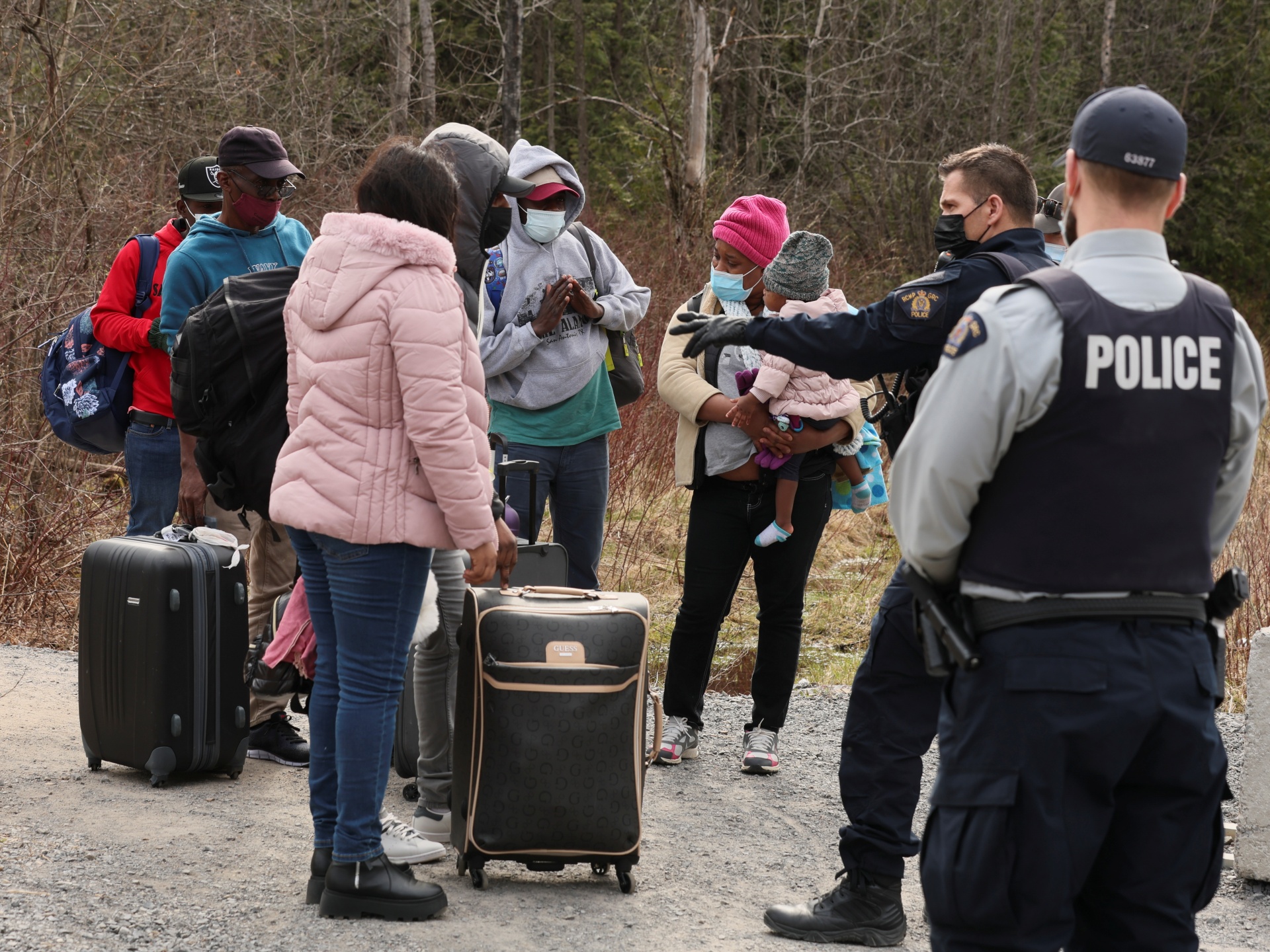Asylum seekers are forced to cross border at informal points of entry due to contentious deal between US and Canada.
The number of asylum seekers entering Canada at informal points along the country’s border with the United States has reached the highest level since 2017, federal police data shows, as Ottawa prepares to defend a pact that denies entry to most who arrive at formal crossings.
The Reuters news agency reported on Tuesday that the Royal Canadian Mounted Police (RCMP) intercepted 23,358 asylum seekers crossing into Canada at unofficial entry points during the first eight months of the year.
That is 13 percent more than for all of 2017, the year the Canadian government first started tracking the numbers amid a surge in informal border crossings, particularly at Roxham Road, which links the Canadian province of Quebec and the US state of New York.
University of Ottawa immigration law professor Jamie Chai-Yun Liew told Reuters that the numbers could be linked to an increase in demand after Canada lifted coronavirus-related restrictions at the border. “I think it’s like any travel: People are just on the move again,” she said.

The report comes just days before the Canadian government is set to go before the Supreme Court of Canada to defend a bilateral agreement with the US that has drawn widespread criticism from rights groups.
Signed in 2002, the Safe Third Country Agreement (STCA) forces asylum seekers to make claims for protection in the first country they arrive in, either the US or Canada.
The idea underpinning the agreement is that both countries are “safe” and offer people access to fair refugee status determination systems. In practice, it means most people who try to make a claim at a Canadian port of entry are turned back to the US.
But Canadian law allows asylum seekers to apply for protection once in Canada – and this loophole has pushed thousands of people to make sometimes dangerous treks across the 6,416km (3,987-mile) US-Canada land border in recent years.
Canada’s top court will hear a legal challenge to the STCA on October 6, the rights groups involved in the case have said.
They have argued the US is not a safe country for refugees, and said the agreement violates Canada’s constitution, known as the Canadian Charter of Rights and Freedoms, as well as international law. Rights advocates also said it puts asylum seekers at risk by forcing them to take more dangerous journeys to cross the border.
On Oct. 6, the Supreme Court of Canada will review the constitutionality of the Safe Third Country Agreement! @AmnestyNow, the @CCC_CCE and the Canadian Council for Refugees are welcoming this decision that follows a long history of legal challenges. For more info #EndtheSTCA pic.twitter.com/zY0QxdY7zD
— Canadian Council for Refugees (@ccrweb) September 27, 2022
“Because the agreement only applies at official border crossings, many refugees have been forced to cross the border in between ports of entry, sometimes in perilous conditions,” the Canadian Council for Refugees and other groups seeking to end the STCA said in a statement in December.
“Withdrawing from the Agreement would not only ensure that Canada meets its Charter and legal obligations, but would also allow people to present themselves in an orderly way at ports of entry, ending the need for irregular crossings.”
Prime Minister Justin Trudeau’s government has defended the STCA, however, saying it has helped in “ensuring that our shared border [with the US] remains well managed”.
“Canada remains firmly committed to upholding a fair and compassionate refugee protection system and the STCA remains a comprehensive means for the compassionate, fair, and orderly handling of asylum claims at the Canada-US land border,” it said last year.
